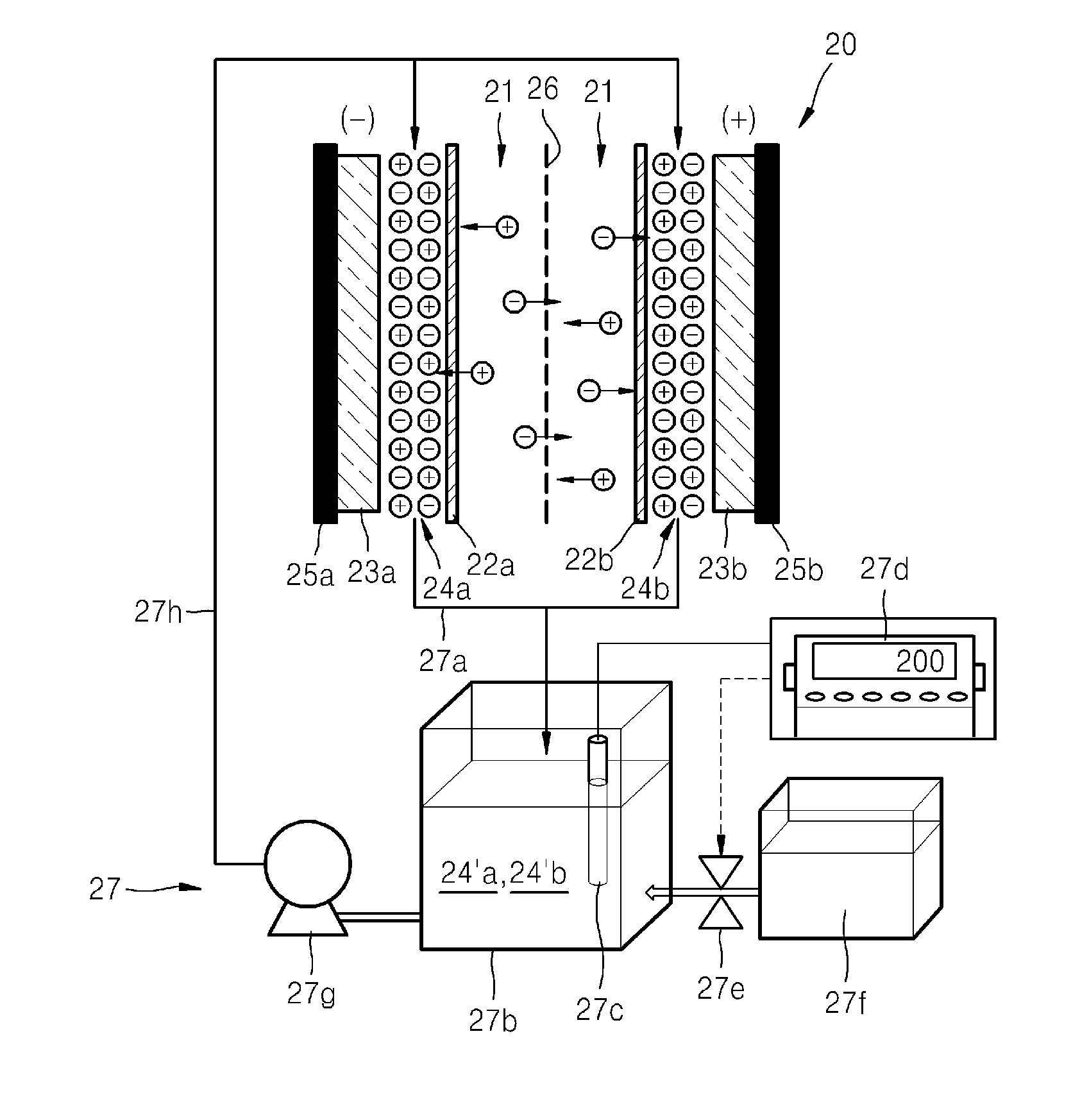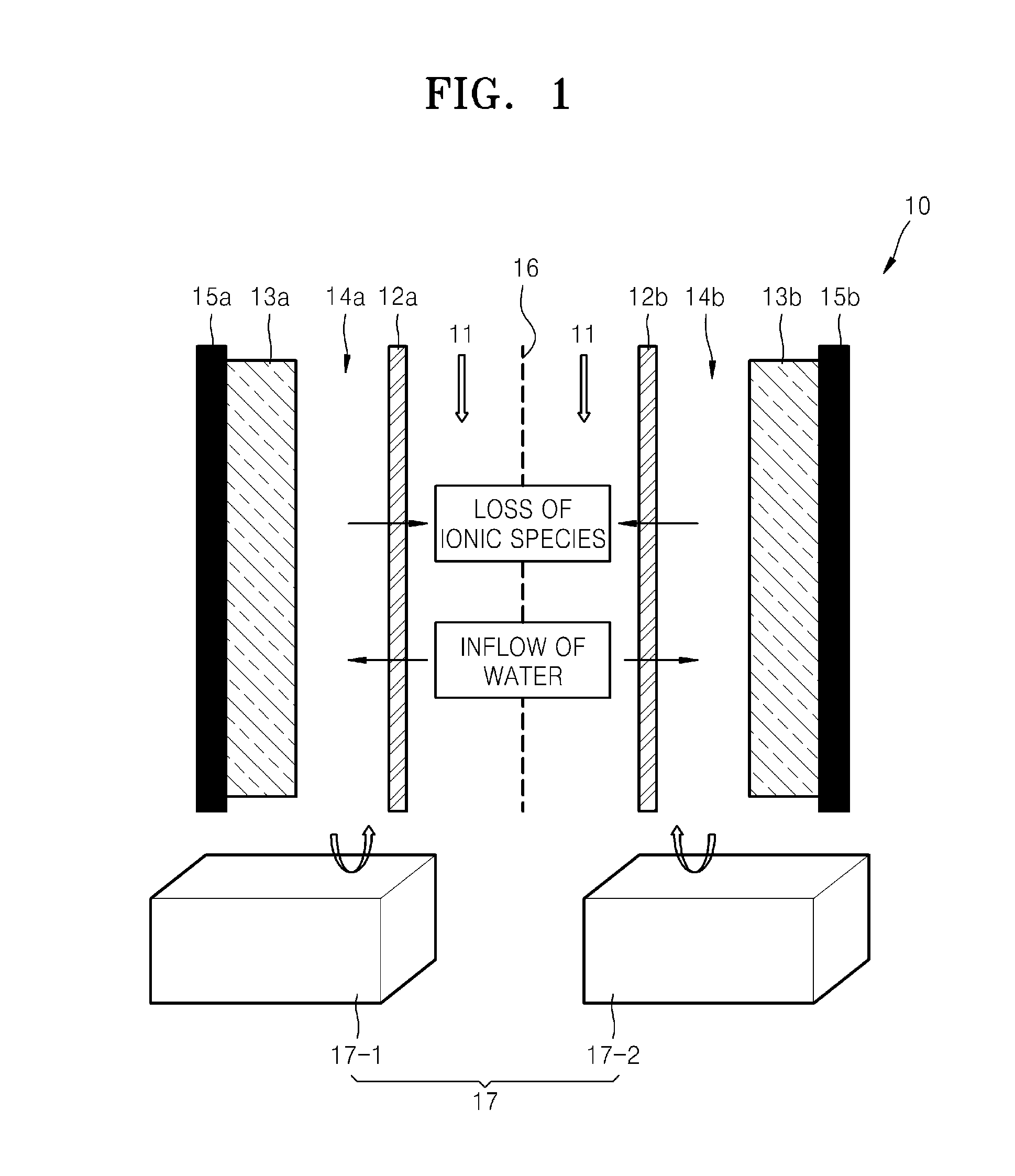Capacitive deionization device
a deionization device and capacitive technology, applied in the direction of diaphragms, refrigeration components, electrodialysis, etc., can solve the problems of difficult control of all ions to be moved towards the corresponding electrode, low ion removal efficiency of typical cdi devices, and low environmental impact of devices
- Summary
- Abstract
- Description
- Claims
- Application Information
AI Technical Summary
Benefits of technology
Problems solved by technology
Method used
Image
Examples
example 1
Manufacture of an Electrode and a Cell
[0112]1) Manufacture of Electrode
[0113]In the present example, 40 g of activated carbon (MSP 20, available from KANSAI COKE AND CHEMICALS Co., Ltd.), 10 g of carbon black, and 4.17 g of an aqueous suspension of 60% by weight of polytetrafluoroethylene (“PTFE”), and 130 g of propylene glycol were put into a stirring vessel, kneaded, and then press-molded to manufacture a porous electrode. The porous electrode was dried in an oven at 80° C. for 2 hours, at 120° C. for 1 hour, and at 200° C. for 1 hour to complete the manufacture of the porous electrode.
[0114]2) Manufacture of Cell and CDI
[0115]First, the porous electrode, which was dried as described above, was cut into 2 pieces, each having an area of 13.5 cm×9 cm (121.5 cm2), and the weights of the electrodes were measured. Each of the porous electrodes had a weight of 2.0 g.
[0116]Second, the two porous electrodes were immersed in an electrolyte solution of 1 M aqueous NaCl solution in vacuum.
[0...
PUM
| Property | Measurement | Unit |
|---|---|---|
| ionic conductivity | aaaaa | aaaaa |
| weight | aaaaa | aaaaa |
| weight | aaaaa | aaaaa |
Abstract
Description
Claims
Application Information
 Login to View More
Login to View More - R&D
- Intellectual Property
- Life Sciences
- Materials
- Tech Scout
- Unparalleled Data Quality
- Higher Quality Content
- 60% Fewer Hallucinations
Browse by: Latest US Patents, China's latest patents, Technical Efficacy Thesaurus, Application Domain, Technology Topic, Popular Technical Reports.
© 2025 PatSnap. All rights reserved.Legal|Privacy policy|Modern Slavery Act Transparency Statement|Sitemap|About US| Contact US: help@patsnap.com



